My First Finished Game: Not a Hit, But It Hit Me Hard
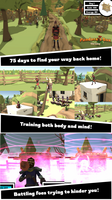
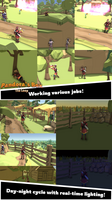
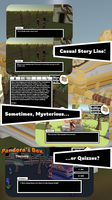
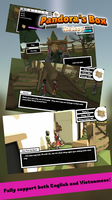
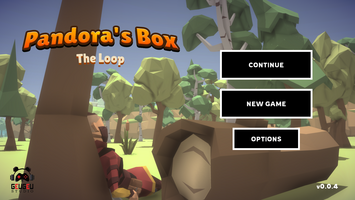
Introduction: From Nostalgia to Launch Screens
According to legend, I’m among the 10% of solo devs who actually finish a game! (I jest…but only slightly).
This project was heavily inspired by the golden age of dating-sim Flash games. While my version is thematically different, the mechanics and core loop take clear cues from that genre. I basically took my childhood memories, wrapped them in some Unity magic, and hit "Build."
I started seriously dabbling in game development around 2019. Before that, I was mostly just poking around various engines with no real direction (and no coding knowledge). After years of self-teaching, I finally released a game I could call complete. This mobile game was built over three chaotic months, launched in May 2024 on both iOS and Android.
I made a staggering $3—mostly from family members. Naturally, I burned out. I neglected the game post-launch, didn’t renew my Apple Developer license (who knew $100 a year could hurt so bad), and the game eventually vanished into the digital ether. But hey, I finished something!
I chose Unity because it’s one of the most beginner-friendly engines out there, and the internet is basically overflowing with Unity tutorials. If you're just starting your game dev journey, Unity’s a solid first sword to wield.
Production: What Went Right (and What Didn’t)
What Went Well
1. Determination and Blind Commitment
I started with nothing but pure willpower. Every mechanic, every piece of code—none of it was familiar to me. But I had already sunk so much time and energy into the project that giving up didn’t feel like an option. I went full tunnel vision and built like a madman.
2. Using the Right Tools (a.k.a. the Asset Store)
Let’s be real—I’m a programmer, not a pixel wizard. I could learn art, sure, but spreading myself too thin is a fast track to burnout. I’m a firm believer in specialization, so I turned to the Unity Asset Store and invested in some high-quality assets. It was the first time I ever spent money on game development, and honestly, it was worth every penny.
3. No Strict Deadlines (But Also Kind Of?)
Being a solo dev without deadlines is a double-edged sword. For me, it worked out. I could be flexible, follow inspiration when it struck, and explore without panic. I didn’t have a set schedule—but I was working like a man possessed anyway. Structure? Who needs it when you’ve got obsession?
What Didn’t Go So Well
1. Real-Life Pressure and Burnout
Mid-twenties hit hard. Real-life responsibilities and existential dread don’t mix well with creative pursuits. I poured everything I had into this game, hoping it would offer a clearer future—but let’s just say it’s not easy making art while worrying about rent.
2. Too Many Firsts All at Once
This project was full of “firsts.” First time making a full game. First time publishing. First time optimizing for mobile. First time touching GIMP (and immediately regretting it). There were entire phases of development that I didn’t even know existed when I started—especially the publishing side.
3. No Real Design Direction
There was no solid game design at the start—just vibes and vibes alone. I was reverse-engineering ideas as I went, which led to some wild goose chases and weeks of running in circles. At times, I didn’t even know what kind of experience I was trying to make. But hey, we made it through the fog!
From Flash to Finish: How Things Evolved
The entire foundation of the game was built around dating-sim Flash games from my youth. I reverse-engineered their systems by replaying them obsessively—manually tracking stats like damage, gold, and progression with a notebook and a dream. It was... slow. Painfully slow.
I later discovered tools that could’ve decompiled Flash games into ActionScript or Assembly. But that’s a story for another time (and a missed opportunity I try not to think about too hard).
Transitioning those 2D click-based mechanics into a 3D mobile game came with its own flavor of pain. Controls were tough to get right. Optimization was even worse—without access to a bunch of test devices, it was basically trial and error in the dark.
Publishing was another mountain. Business registration, taxes, promo art, EULAs, store optimization... I had to learn GIMP from scratch just to make an app icon. I still have flashbacks. Never again.
Each step of the journey gave me a deeper appreciation for just how much invisible work goes into a finished game. Whether it ends up fun or not, making a complete, functional game is already a herculean task.
Conclusion: Lessons Learned
Finishing this game wasn’t just a personal milestone—it was proof that I could stick with something all the way through. Even if the result wasn’t groundbreaking, the experience taught me more than any tutorial ever could. I didn’t just learn how to make a game—I learned how much I didn’t know, and how far I was willing to go to figure things out.
From juggling design chaos to wrestling with mobile publishing, I walked away with a new respect for every part of the process—even the parts I never want to touch again (looking at you, promotional graphics). More than anything, I realized that game development is less about perfection and more about persistence. You keep moving, keep learning, and eventually, you hit publish.
It wasn’t a hit. It barely made coffee money. But it was mine—flaws, quirks, and all. And for a first game, that’s more than enough.
Files
Get Pandora's Box: The Loop
Pandora's Box: The Loop
75 Days to Find Your Way Home!
| Status | Released |
| Author | LongNguyenCoder |
| Genre | Simulation, Adventure |
| Tags | Casual, Low-poly, No AI, Singleplayer, Turn-based, Unity |
Leave a comment
Log in with itch.io to leave a comment.